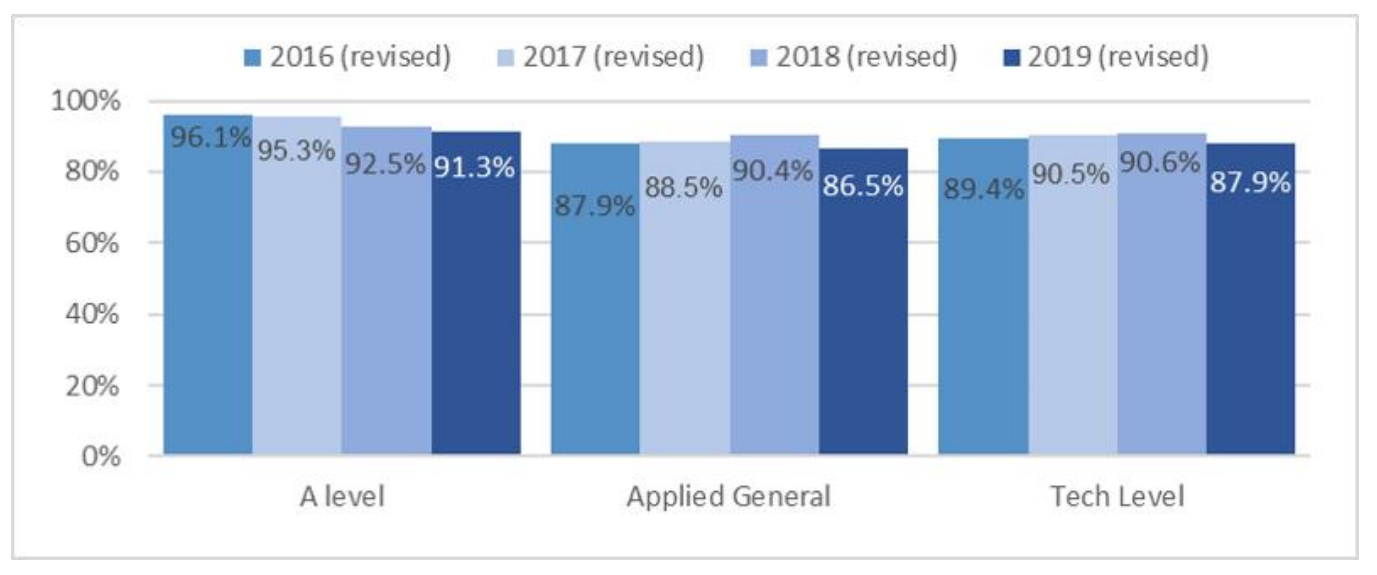Drop-out rates among pupils studying for their A-levels and other 16 to 19 qualifications rose across the board last year.
New data from the Department for Education shows the retention rate at A-level fell to 91.3 per cent in 2019, down from 92.5 per cent the previous year and 96.1 per cent in 2016.
Retention rates for applied generals and tech levels also fell quite sharply, having risen for the previous three years. Applied generals had a retention rate of 86.5 per cent, down from 90.4 per cent in 2018, while retention of tech level pupils fell from 90.6 per cent to 87.9 per cent over the same period.
The retention measure shows the percentage of students who completed their main study programme at a provider.

The data, published as an update to last year’s 16 to 19 statistics, also shows a big discrepancy in drop-out rates between disadvantaged pupils and their non-disadvantaged peers.
At A-level, disadvantaged pupils had a retention rate of just 85.5 per cent in 2019, compared with 92.4 per cent among non-disadvantaged pupils.
Retention rates also vary depending on type of institution. Converter academies have the highest retention rates for A-level at 93.5 per cent, followed by local authority maintained schools (92.7 per cent), free schools (92.1 per cent), 16 to 19 free schools (91.5 per cent) and sponsored academies (91.2 per cent).
The institutions with the worst retention rates at A-level are university technical colleges (73.9 per cent) and studio schools (79.8 per cent).
However, UTCs and studio schools have higher retention rates than most other school types when it comes to applied general programmes.








Your thoughts